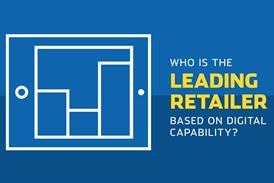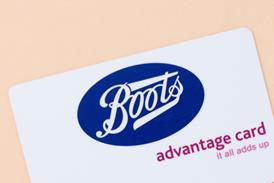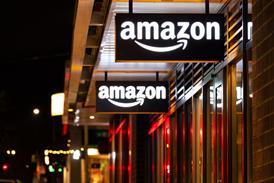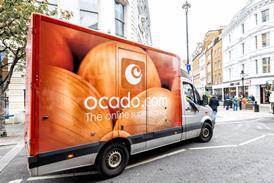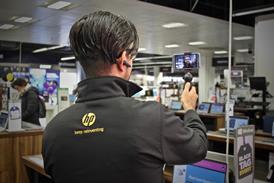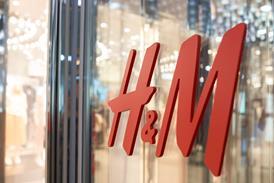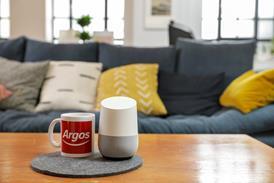- Rankings
- Marketing
- Logistics & customer service
- Cross-channel
- Ecommerce
 Evri reports 30% increase in US parcel deliveries as postal firms pause shipments
Evri reports 30% increase in US parcel deliveries as postal firms pause shipments Q&A: New boss of H&M-backed Centra Sara Laurell wants to keep the growth coming
Q&A: New boss of H&M-backed Centra Sara Laurell wants to keep the growth coming Why retail is lagging behind other sectors in AI investment
Why retail is lagging behind other sectors in AI investment Q&A: Currys Business’ Dean Kramer on growing brand awareness to reach more UK firms
Q&A: Currys Business’ Dean Kramer on growing brand awareness to reach more UK firms
- Case studies
- Methodology
Ecommerce
We looked at user experience across desktop and mobile websites, as well as mobile apps, to understand how the online customer journey can ultimately remove any barriers to purchase.
Ecommerce is an increasingly fundamental element of retail, reflected in the fact that 94% of retailers have transactional websites. But in a saturated market, it can be challenging to establish which capabilities best support growth.
Top 12 leading retailers in the ecommerce category
| Rank | Retailer | % |
|---|---|---|
| 1 | Amazon | 83.0 |
| 2 | eBay | 65.4 |
| 3 | Apple | 65.0 |
| 4 | Asos | 63.6 |
| 5 | WiggleCRC | 63.6 |
| 6 | Mothercare | 62.5 |
| 7 | Zalando | 62.4 |
| 8 | Screwfix | 61.4 |
| 9 | Notonthehighstreet | 60.0 |
| 10 | Halfords | 59.9 |
| 11 | Matchesfashion.com | 59.8 |
| 12 | Tesco | 59.6 |
Top 12 leading retailers for mobile app
| Rank | Retailer | % |
|---|---|---|
| 1 | Amazon | 83.9 |
| 2 | Asos | 56.9 |
| 3 | Zalando | 55.0 |
| 4 | Mothercare | 51.2 |
| 5 | Urban Outfitters | 51.2 |
| 6 | eBay | 48.8 |
| 7 | H&M | 47.9 |
| 8 | WiggleCRC | 45.5 |
| 9 | Farfetch | 44.5 |
| 10 | Screwfix | 44.5 |
| 11 | Halfords | 43.1 |
| 12 | JD Sports | 43.1 |
Importance of customer data
Retailers are inundated with data from customers’ online browsing and buying.
Account registration can undoubtedly frustrate mobile consumers shopping quickly on the go – only a third of retailers allow customers to pay without registering for an account, viewing it as off-putting to the customer.
However, account creation can support retailers’ efforts to obtain customer data and drive personalisation.
Personalising online messaging, product recommendations and even homepages has been a priority for some retailers.
Shop Direct’s personalisation push has supported growth, stating its long-term investments in data and personalisation are “coming good”, on the back of group sales rising 3.4% in 2016/17.
It has boosted average order values by using predictive models focusing on similar customers’ browsing and purchasing behaviours to improve relevant product recommendations. However, 47% of retailers are yet to invest in personalisation this way online.
In order to drive average order values and increase dwell time, retailers would benefit from making product recommendations online – including complimentary bundles or promoting higher margin items – a strategy that has been particularly valuable in driving additional spend for more general merchandisers like Amazon, Currys PC World and eBay.
Importance of usability
Online sales are undeniably driven by user experience. Slow or unresponsive webpages can lead customers to look elsewhere, hampering sales.
Average download speed across the retailers assessed is four seconds on desktop and five seconds on mobile. However, this varies across sectors with grocery sites generally very fast while outdoor and leisure websites are, on the whole, rather slow.
However, WiggleCRC offers solid speed combined with product comparisons, ratings, reviews and an above-average number of images on product pages, making shoppers more comfortable with niche big-ticket purchases. Fellow outdoor specialists should follow its lead to boost their online sales.
When driving conversion, customer product reviews and ratings can eliminate any doubt customers have before making a purchase. However, 35% of retailers are yet to introduce this capability, while over 90% have no product comparison feature.
While not applicable to all sectors, retailers would benefit from using these features to limit uncertainty – which is particularly relevant when buying something for the first time.
Dixons Carphone’s online sales growth has benefited from its product comparison feature, which also includes customer ratings on each item’s functionality.
Simplicity and ease are also key. Auto-complete and suggestion functions are essential for any online player as they make search more effective and faster, and are able to handle misspelled search terms, but 22% of retailers have so far shunned these.
Ecommerce innovation
Taking this a step further, a handful of retailers, including Asos and Amazon, are using AI for image search on their apps, while Boohoo has implemented this on its mobile site, transforming a mundane part of the online shopping journey and strengthening engagement.
It’s questionable whether apps are required to support a retailer’s ecommerce proposition these days and only 44% of the retailers assessed have developed an app.
Debenhams discontinued its app, instead launching a progressive web app in late-2017, which creates an app-like experience on a mobile website without the need to download an app – making browsing more accessible and faster for customers.
However, apps can facilitate innovation and advance the customer experience, setting one retailer out from the rest.
Examples of this come from barcode scanning, which enables customers to quickly find an item online when in store, while scanning payment cards speeds up the checkout process.
Perhaps the most ingenious app innovation is Amazon’s use of barcode scanning, enabling customers to quickly compare product prices on its site when in competing retailers’ stores – normally winning sales as a result.
So while apps are not a necessity, engagement tools are, whether through desktop or mobile. Ease of use, simplicity and personalisation all enhance engagement while removing friction, separating the likes of Amazon from the rest of the ecommerce pack.
CASE STUDY
Amazon’s app makes search simple

There are a swathe of factors that make Amazon’s ecommerce offer stand out from its peers, but one of the most impressive features is its search.
For an etailer that sells several hundred million SKUs, Amazon makes search quick and easy.
This is particularly true of its app, which caters to how today’s customers shop offline – with their smartphone in hand, hungrily hunting for a better deal.
The Amazon app offers barcode scanning for products. This means a shopper in a Waterstones’ store, for example, can scan the barcode of a book they are thinking about buying on the app and immediately be taken to the Amazon product page to see if they can get it for a cheaper price.
Amazon’s app also boasts image recognition technology. A shopper can simply point their smartphone in front of an object and have the Amazon app scan it and match it to similar products that it sells, without even taking a picture.
It is no surprise that the online giant is the only UK retailer to have in-built voice search capabilities in its app.
As well as diversifying its search capabilities, the etailer has developed a quick and seamless checkout experience across its app, mobile and desktop websites, with just four checkout steps across all platforms. It also offers a scan payment card feature on the app to remove friction.
Shoppers have to register to Amazon’s platforms to make any purchase. The retailer uses these details to give time-busting benefits like saving customer details for one-click purchases to incentivise repeat custom.
In a world where many retailers are asking whether apps are worth the hassle, Amazon has made it resoundingly clear that, if done right, they can be used to win market share and customer loyalty on a daily basis.
The ecommerce giant’s 91.5 million shopping app users and consistent number one rating as the top downloaded retail app are indicative of an online behemoth that has made its app an indispensable shopping aide.



